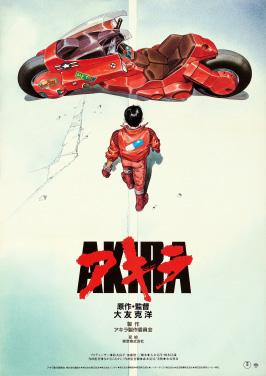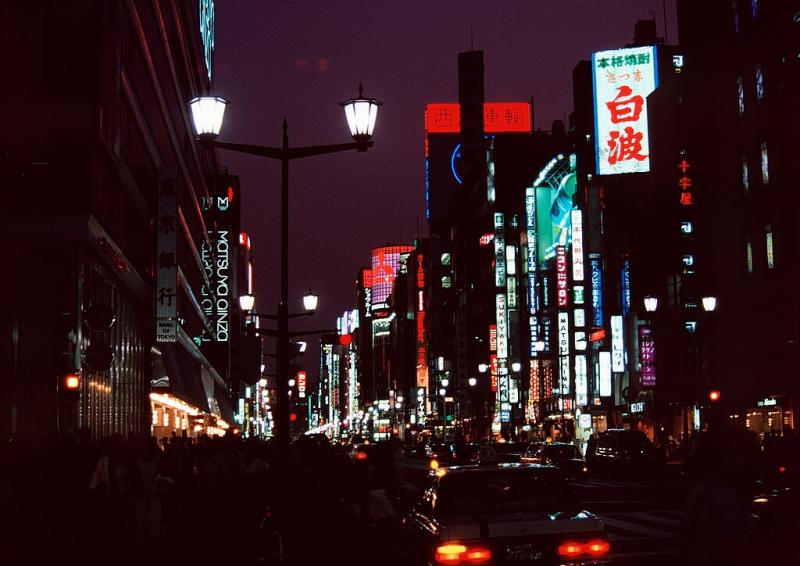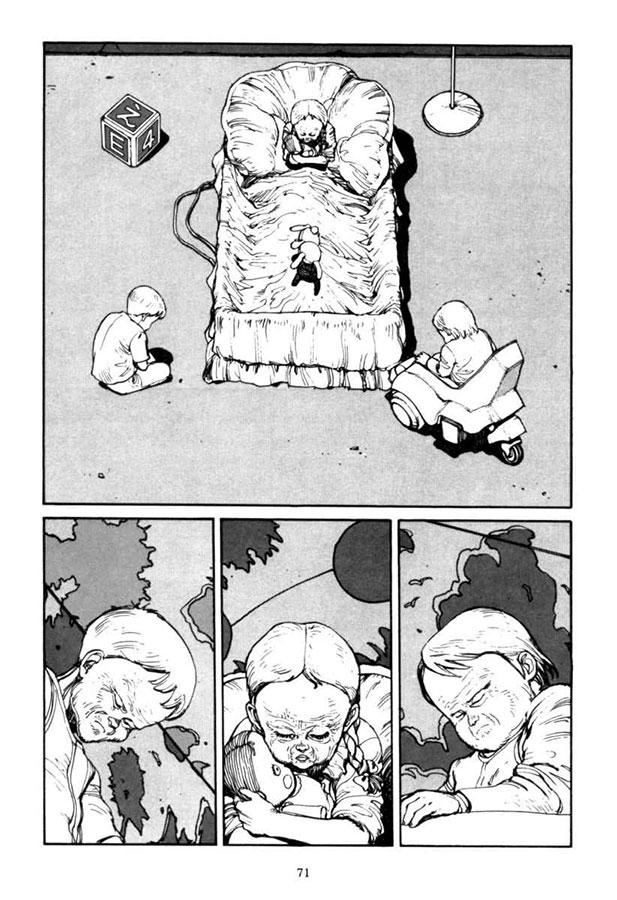
"Akira": The Groundbreaking Anime That Reflected Japan's Economic Bubble Era
It's 1988, at the height of Japan's economic bubble, during a time of seemingly endless prosperity. Juliana's Tokyo, a trendy European-style nightclub, would later become the symbol of these good times. Young office workers in tight, revealing bodycon dresses danced on platforms while drunken salarymen watched from below. Those were remarkable days for Japan's economy.
Then along comes a dark anime movie about psychic children and motorcycle gangs that asks an uncomfortable question: "What if our economic success actually destroys us?"
That movie was Akira (1988), and looking back, it was more prophetic than anyone realized.
More Than Just Cool Motorcycles
Akira was based on the long-running manga series (1982-1990) by master mangaka Otomo Katsuhiro. Everyone remembers Kaneda's iconic red motorcycle and his famous sliding scene, but Akira was telling a deeper story. At its heart, it's about two friends: Kaneda, the confident biker gang leader, and Tetsuo, his smaller, weaker friend who always needs rescuing. They live in a dystopian near-future Tokyo divided between the wealthy and the poor, with gleaming shopping areas next to slums. And they are part of a biker gang that battles their rivals, the Clowns, whose leader wears clown face paint.
Tetsuo encounters a strange, aged child trying to escape the government. He gets captured and subjected to horrific experiments that unlock his psychic powers. As a result, he goes completely insane with pain. Suddenly, the weak kid who could never defend himself can literally tear apart armies with his mind. But he becomes so crazed that he turns against his own gang, and eventually his best friend Kaneda. This leads to destroyed friendships and a devastated city.
This wasn't just meaningless, random violence but rather served as a perfect metaphor for what was happening in Japan during the Bubble Economy period.
The Bubble Era: Japan's Economic Peak
During the 1980s, Japan had the world's second-largest economy. The country was experiencing an incredible boom with land prices skyrocketing, and media speculated about Japan potentially overtaking the United States as the world's top economic power.
Japanese car companies consistently outsold American automakers in traditional American markets. This success created a massive trade deficit that became a serious problem for the United States. To address these trade imbalances, world leaders signed the Plaza Accord in 1985. This agreement weakened the U.S. dollar against major currencies like the Japanese yen, making American goods cheaper in Japan while making Japanese exports more expensive for American consumers.
However, the stronger yen created an unexpected side effect. Japanese companies, now with much greater purchasing power, began a buying spree both domestically and internationally. American newspapers published alarmed headlines every time another iconic American company was purchased by the Japanese. Sony's purchase of Columbia Pictures became the most famous example of this trend.
This growth meant guaranteed jobs for young Japanese men at elite universities. They would have lifetime employment at top companies, so young men desperately tried to pass entrance exams for elite universities.
But this success had a darker side. Young people faced pressure to enter the best schools like the University of Tokyo or Waseda University. The education system worked like a sorting machine: pass the memorization-based tests and you're set for life, fail them and you're sent to "loser schools" with no prospects.
Much of this economic growth was built on speculation. People and companies borrowed money to buy land, then used that land as collateral to buy more land. People said the land in Tokyo was worth all of California. It was a bubble ready to burst.
Tetsuo: The Ultimate Stressed Student
This scene shows the dysfunction of the lower-ranking schools
Akira dropped viewers into Neo-Tokyo, a dystopian nightmare where the authoritarian government is corrupt, schools for "losers" resemble prisons, and gangs of teenagers roam the streets because society has completely failed them.
The movie makes it clear that Kaneda, Tetsuo, and their gang are all stuck in one of those "loser schools." These are kids who got sorted into the failure track, where teachers literally hit students and classes are meaningless. No wonder they're riding motorcycles and fighting - what else do they have to look forward to?
I would argue that audience members could relate more to Tetsuo than the heroic Kaneda
Among the bikers, while Kaneda gets marketing attention with his cool bike and confident attitude, Tetsuo is the heart of the anime. He's much more relatable to anyone who's ever felt crushed by expectations, which included many viewers watching the movie.
Tetsuo starts as this weak kid who always needs saving. This feels familiar to anyone who's ever felt inadequate compared to more successful friends or siblings. Then he encounters those creepy aged children who've been experimented on by the government and these are kids who had their childhoods stolen in the name of "developing their abilities."
These "children" reflect what Japan's cram school system was doing to real kids by pushing them so hard to perform that they barely had time to be children. I see this in my students today: when they are twenty, they seem "middle-aged." Sometimes I feel younger in spirit than my students, which shows how the education system drains youth of their energy.
When Tetsuo finally gets his powers, he doesn't become a hero. Instead, he becomes a monster who attacks everyone and everything. In his final battle with Kaneda, his body literally transforms into a grotesque mass of flesh, but even with godlike power, he still has the insecurities of a teenager.
Hypermasculine Heroes in a Male-Dominated World
Here's something that will surprise anyone used to modern anime: Kaneda is ridiculously competent and confident. He can perform impossible motorcycle stunts, outrun trained police, and handle military weapons expertly. He embodies that bubble-era Japanese masculinity where men were expected to be unstoppable. This stereotype disappeared after the bubble ended in 1990, but was common during that era.
The women in the movie? They're side characters who need rescuing. Even Kei, Kaneda's love interest who's a resistance fighter, is helpless with weapons and needs Kaneda to save her. This reflects how marginalized women were in the workplace during the bubble era.
But Kaneda's extreme masculinity makes Tetsuo more sympathetic. Every alienated kid watching could relate to being the weak one overshadowed by the confident alpha friend.
Akira tapped into something that became a recurring theme in anime: extreme stress and anger can unlock incredible power. This concept appears everywhere from Dragon Ball Z (Super Saiyan transformations) to countless other series like Demon Slayer.
There's something deeply appealing about the fantasy that all your frustration and powerlessness could suddenly explode into amazing strength. For stressed students grinding through Japan's brutal education system, watching Tetsuo tear through police and military forces must have been incredibly satisfying.
The Legacy Lives On: Why Akira Still Matters
Akira still retains its power to captivate audiences decades later, with a 4K release in 2021
When it opened in Western theaters, Akira changed how people thought about animation. This wasn't a typical Disney movie for children - this was brutal, complex, and made for adults. It proved that anime could be a serious adult medium and paved the way for the overseas anime boom that followed.
More importantly, it was asking the right questions at the right time. What's the point of all this pressure and stress if it's destroying the young people going through it? What happens when the economic miracle runs out of energy?
Looking back, this movie was prophetic. The Japanese bubble burst in 1991, just three years after the movie's release. All that speculation and debt caught up with the country, leading to the "Lost Decades" of economic stagnation. The high-pressure education system that was supposed to guarantee success suddenly didn't guarantee anything as major companies reduced hiring. The stressed students of the Bubble Era became the lost generation of the 1990s and beyond. Many of them probably felt like Tetsuo, wanting to strike back against the world.
As Tim Rattray noted in 2018 on Crunchyroll.com:
At the time of Akira's release, anime was still an unknown quantity to much of the world outside of Japan. Western audiences were used to animation being strictly for kids through the work of Disney and their contemporaries. So Akira stood in stark contrast to those beliefs. The brutality of Neo-Tokyo was unlike anything else people had seen, depicting violence and destruction on a level that live action couldn't match.
This landmark anime predicted the end of the bubble economy and warned about what happens when society puts so much pressure on its young people that they eventually explode - figuratively or literally, like Tetsuo transforming into a blob of flesh.
Decades later, Akira still looks incredible and still resonates. The hand-drawn animation holds up against today's anime, and the story feels just as relevant in our own era of economic uncertainty and social pressure. This movie reminds us that sometimes outsiders and "losers" can see the cracks in the system that everyone else is too busy enjoying to notice.
That's a lesson we're still learning today, looking at how much pressure we put on Generation Z.
Next time, we'll look at how anime dealt with the aftermath of the bubble burst and the "Lost Decades" that followed.
Discussion Questions
- What made Akira stand out from other animated films at the time, both in Japan and overseas? Why was it so shocking for Western audiences in 1988?
- How does the dystopian world of Akira reflect Japan’s bubble economy of the 1980s? In what ways does the story warn about the dangers of rapid economic growth and speculation?
- Why is Tetsuo often seen as a more relatable character than Kaneda? How does his transformation symbolize the pressures young people faced in Japan’s education system and society during the bubble era?
- What does Akira’s portrayal of women—often sidelined or needing rescue—tell us about gender roles in Japan during the 1980s? How does this compare with later anime like Evangelion or modern shows where women take on more central roles?
- Why might stressed Japanese students or young workers have found it satisfying to watch Tetsuo’s violent rise to power? How does this connect to the broader appeal of anime where frustration or anger transforms into strength?
- The article says Akira still resonates in today’s world of economic uncertainty and pressure on young people. Do you agree? What parts of the story feel especially relevant for your generation?



Add new comment